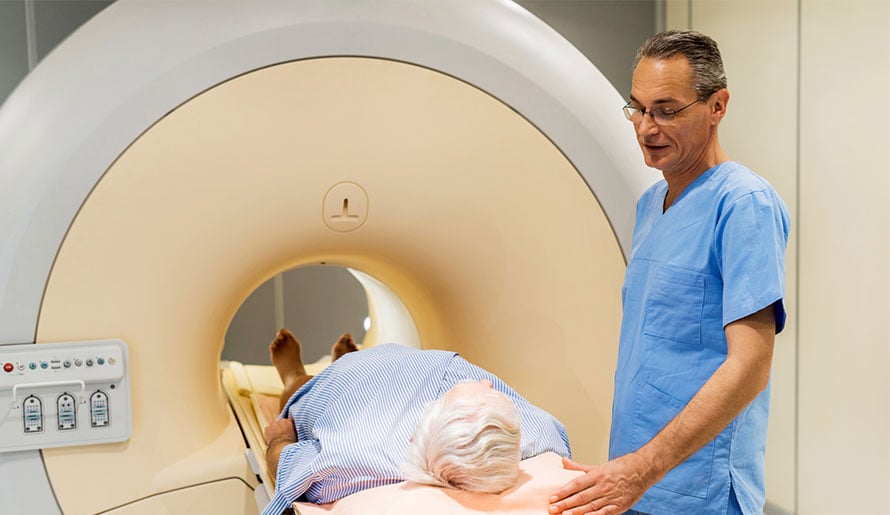4 Easy Facts About Best Prostate Cancer Doctor Shown
4 Easy Facts About Best Prostate Cancer Doctor Shown
Blog Article
Reliable Prostate Cancer Treatment Options for Men
Prostate cancer cells is a widespread issue among guys, with therapy options differing relying on the stage and aggression of the condition. While surgical treatment remains a key therapy approach, there are also different techniques such as radiation treatment, hormone therapy, and immunotherapy that have shown appealing results. Additionally, methods like careful waiting and active surveillance are gaining acknowledgment for their function in taking care of prostate cancer cells. Recognizing the nuances of these therapy choices and their performance is crucial for making educated choices pertaining to one's health and wellness and health.
Surgical Procedure as Therapy Alternative
Surgical treatment stands as a primary therapy alternative for prostate cancer cells patients in instances where the disease is local and surgical procedure is deemed suitable by the medical care group. Prostate cancer surgery aims to eliminate the malignant tissue from the prostate gland, either partly (prostatectomy) or totally (extreme prostatectomy) The decision to go with surgical procedure is generally based on various variables, consisting of the phase of cancer, the individual's overall health, and potential side effects.
One usual surgical approach is robotic-assisted laparoscopic prostatectomy, which provides precision and marginal invasiveness contrasted to traditional open surgical treatment. This strategy utilizes robot arms controlled by the cosmetic surgeon to remove the prostate gland with enhanced dexterity and visualization.
While surgery can be efficient in eliminating local prostate cancer, it might involve threats such as urinary system incontinence and erectile disorder. People thinking about surgery should involve in detailed conversations with their healthcare service providers to weigh the advantages and prospective drawbacks of this therapy choice.
Radiation Treatment for Prostate Cancer Cells
Having actually checked out the role of surgical procedure in dealing with local prostate cancer, the emphasis currently moves to going over radiation treatment as one more essential treatment modality for this illness. Radiation therapy makes use of high-energy rays to target and damage cancer cells in the prostate gland. There are two primary sorts of radiation treatment generally made use of for prostate cancer: outside beam of light radiation and brachytherapy.
Outside light beam radiation involves directing radiation from a machine outside the body towards the prostate. On the other hand, brachytherapy includes putting contaminated seeds straight right into the prostate, providing radiation from within.
Radiation treatment can be a standalone therapy for local prostate cancer or used in combination with other treatments, such as surgery or hormone treatment, relying on the phase and aggressiveness of the cancer cells. Best prostate cancer hospital in Mumbai. Usual negative effects of radiation therapy may consist of fatigue, urinary concerns, and bowel problems, which are usually momentary and can be taken care of successfully
Hormone Treatment in Prostate Cancer Cells
Hormone therapy is an essential therapy strategy in taking care of prostate cancer, especially in situations where the cancer has spread beyond the prostate gland. Prostate cancer cells frequently depend on male hormones, such as testosterone, to grow. Hormone therapy, additionally understood as androgen deprivation therapy, aims to either decrease the production of these read this hormones in the body or block their effects on the cancer cells.
There are different types of hormone therapy available for prostate cancer treatment. One usual strategy is making use of drugs called LHRH villains and agonists, which work by reducing testosterone levels. One more option is anti-androgens, which obstruct the activity of androgens on the cancer cells. Some men may profit from a mix of these therapies to successfully handle the cancer cells.
Hormone therapy can help reduce the progression of prostate cancer, ease signs, and improve lifestyle. Nonetheless, it is not a curative treatment and might feature adverse effects such as warm flashes, fatigue, and loss of sex drive. Normal monitoring and conversations with medical care service providers are vital to manage the impacts of hormone treatment properly
Immunotherapy for Prostate Cancer
Immunotherapy has actually arised as an appealing treatment method for prostate cancer cells, offering new methods for combating the condition. Unlike conventional therapies like surgery or radiation, which straight target cancer cells, immunotherapy works by taking advantage of the body's body immune system to assault and acknowledge cancer cells.
One form of immunotherapy being checked out for prostate cancer is checkpoint preventions. These medicines target healthy proteins that protect against the immune system from attacking and acknowledging cancer cells. By blocking these proteins, checkpoint preventions can boost the immune reaction versus prostate cancer cells.
An additional technique includes therapeutic vaccinations, which boost the immune system to target details antigens located on prostate cancer cells. These vaccinations can aid the body immune system recognize and ruin cancer cells better.


Watchful Waiting and Active Security
In the realm of prostate cancer administration, especially for cases where hostile intervention may not be immediately essential, the technique of watchful waiting and energetic surveillance plays a substantial role. Watchful waiting includes keeping track of check my site the cancer without immediate therapy, intervening just if the cancer shows indicators of development. This technique is commonly taken into consideration for older clients with slow-growing growths or those with numerous health problems where the threats of treatment might exceed the advantages.
Energetic security, on the other hand, includes regular tracking with PSA examinations, digital rectal examinations, and periodic biopsies. It is usually recommended for clients with low-risk prostate cancer to carefully track any kind of adjustments in the cancer's behavior. Treatment choices can be reassessed. if there are indicators of the cancer cells ending up being more aggressive.
Both watchful waiting and active monitoring purpose to prevent unnecessary therapies and their possible adverse effects, such as urinary incontinence and impotence, while ensuring timely intervention if the cancer progresses. These techniques offer an equilibrium between taking care of the cancer cells efficiently and maintaining the patient's top quality of life.
Conclusion

Prostate cancer cells surgery intends to eliminate the cancerous cells from the prostate gland, either partially (prostatectomy) or totally (extreme prostatectomy)Having actually explored the duty of surgical treatment in dealing with localized prostate cancer cells, the emphasis now changes to reviewing radiation treatment as an additional essential therapy method for this disease.Hormonal agent treatment is a critical treatment technique in handling prostate cancer cells, especially in situations where the cancer has actually spread out beyond the prostate gland. Watchful waiting entails keeping an eye on the cancer cells without prompt treatment, intervening just if the cancer reveals indications of progression. It is commonly advised for clients with low-risk prostate cancer to carefully track any kind of changes in the cancer's behavior.
Report this page